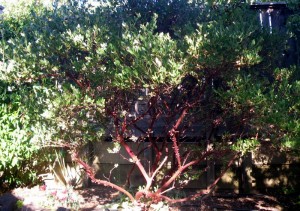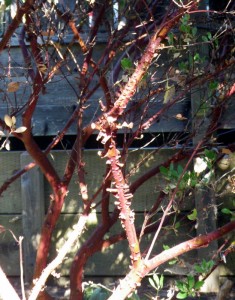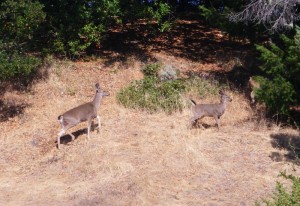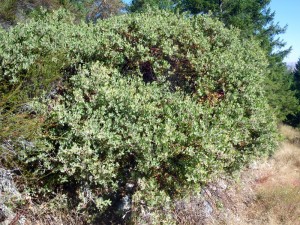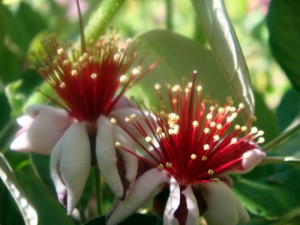
Early summer the flowers of the pineapple guava are beautiful and edible
by Avis Licht – Edible flowers aren’t the usual fare for most people. But I have some favorites that even the most dubious of eaters would enjoy. The pineapple guava, Feijoa sellowiana, has beautiful as well as delicious flowers. You eat the succulent petals that are almost sweet. Not the red stamens.
I’ve written about Feijoa in another post, talking about the tart and tasty fruit, but now is the time it is flowering in the northern hemisphere, so we’re talking about edible flowers.
How to use Feijoas. The sweet, fleshy white and purplish flower petals can be added to salads. Pluck them carefully and the fruits will still develop. The fruits have a delicious minty-pineapple flavor. Cut them in half and scoop out the pulp with a spoon.
The fruit ripens towards winter and the best fruit drops to the ground when ripe. If you pick it off the bush it’s likely not to be quite ripe.
Those of you with this shrub in the yard, check out the tasty petals and put them in a salad. The rest of you – go run to the nursery and get one of these amazing plants. I know you won’t regret it.
Get all the information in this post on how to grow the Feijoa.
Just to remind you, the Pineapple Guava is an evergreen shrub, that grows to 15 feet if left unpruned. But you can prune it any way you like. It is easy to care for, doesn’t need much water and best of all around my neighborhood – THE DEER DON’T EAT IT!. Don’t ask me why, but it’s true.


